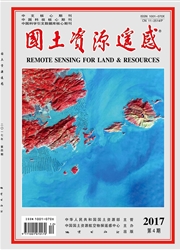

 中文摘要:
中文摘要:
遥感数据分类的优化问题是一个值得探讨的现实课题。为研究Mode滤波器及其在遥感分类后处理中的应用,在详细描述非线性Mode滤波器原理的基础上,针对二维和三维数据的特点,从不同角度对滤波器进行拓展,使其能够应用于遥感数据分类。以二维遥感图像和三维机载Li DAR点云数据为例,分别从2个方面和4个方面对拓展方案进行讨论,利用近邻型和窗口型Mode滤波器改善2种数据的分类质量。对比实验结果证明,拓展后的Mode滤波器能够有效地去除斑点和椒盐噪声,大大减少了点云数据和遥感图像分类后产生的错分类别点,显著提高了2种遥感数据分类的Kappa值和总体精度,达到了预期目的。
 英文摘要:
英文摘要:
Classification optimization is a practical subject which deserves exploration. In order to study mode filter and its application to the post- processing of remote sensing classification,the authors,on the basis of detailed analysis of the principle of the nonlinear mode filter and in view of the characteristics of 2D and 3D data,developed various aspects of the filter to make it suitable for the classification of remote sensing data. Taking remote sensing image and airborne Li DAR point clouds as examples,the authors discussed the developed scheme from two respects and four respects,and the nearest neighbor Mode filter and window- based Mode filter were used to improve the classification results of the two types of data,respectively. Contrastive experimental results demonstrate that the developed Mode filters can remove the speckle and salt and pepper noises effectively, reduce greatly the misclassification points derived from point clouds and remote sensing image,and boost the Kappa value and overall accuracy after classification of the two data remarkably,thus achieving the desired goal.
 同期刊论文项目
同期刊论文项目
 同项目期刊论文
同项目期刊论文
 期刊信息
期刊信息
